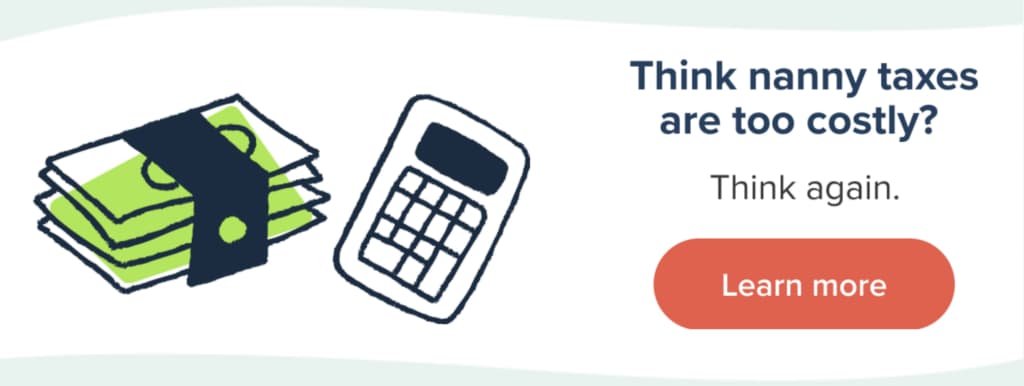When you’re hired as an in-home caregiver to take care of a family’s children or aging loved ones, you’re often so busy thinking about your new duties that you might forget about your tax obligations. Ideally, the family should go over this with you before your first day of work, but if it doesn’t come up, it’s important for you to know what the IRS requires you to do.
To make things easy for you to follow, here are seven items to take care of to ensure the tax process goes as smoothly as possible.
1. Know you’re an employee, not an independent contractor
If you make $2,700 or more from a family, the family has a set of tax and payroll rules from the IRS and the state to follow because you’re considered their household employee. Specifically, the family is responsible for withholding federal income taxes, state income taxes (if you’re in a state that requires it) and Social Security and Medicare (FICA) taxes. Through these withholdings, you’re basically paying your own taxes and the family will also pay some taxes as an employer.
You may have heard that in-home caregivers can be treated as independent contractors (commonly called being 1099’d), but this is almost never correct. Read more about why caregivers need a W-2 to file taxes, not a 1099.
2. Fill out Form W-4 before your first day of work
When you’re hired, your employer should give you a Form W-4 (and a state withholding form if you live in a state with income taxes) so they can determine how much in income taxes to withhold each pay period. The amount withheld is based on what you claim when you fill the form out. The more tax liability you claim, the more in taxes are withheld, and visa versa. If you claim too little tax liability, you might end up having to pay the IRS at the end of the year. If you claim more than you owe, you’ll get a refund.
Learn more about how to fill out a W-4.
3. Keep track of your hours and pay
Your employer should be tracking your earnings and hours, but you should do the same. Each pay period, you should be given a pay stub that includes your gross pay, the taxes withheld and your final net (take-home) pay. No matter if you’re paid via cash, check, Venmo, PayPal or any other medium, you should still get a pay stub with all withheld taxes indicated.
Learn more about how payroll works as a caregiver.
4. Track your part-time work too
If you make less than $2,700 from a family in a calendar year, that family isn’t legally required to withhold any taxes from you. If you work for several families, that could mean that some families will withhold taxes from you and some will not. Once you get close to crossing the $2,700 threshold, alert the family so they can have ample time to prepare for the additional responsibilities they will have in terms of taxes.
Even if you never have to have taxes withheld from a family, you still need to be tracking the money you make. The IRS requires you to file an income tax return and claim all your earnings.
Read more about how taxes work for part-time and occasional caregiving.
5. Get your W-2 form(s) by January 31
If you earn $2,700 or more during the calendar year, your employer has until January 31st of the following year to send you a Form W-2, which indicates all the taxes that were paid on your behalf by them. You’ll use this form to help fill out your personal income tax return. Make sure the family has your current address on file because if you quit your job, they’ll have no way to mail you your W-2.
If you don’t get a W-2 because you made less than $2,700 from one, or several, families, just enter the total money you earned in the “Other Income” line on your tax return and pay any required taxes.
6. File your taxes by the April 15th deadline
Use the W-2 your employer prepared for you — as well as any other caregiving income you earned on the side — to file your personal income return by the April 15th deadline. If for some reason you are not prepared to file your taxes on time, you can apply for an extension using Form 4868 to give you another six months to get your taxes in order and avoid any penalties. Just remember that filing for an extension does not absolve you of paying any taxes due. The IRS expects you to estimate the taxes you owe when you file for an extension and send in the corresponding payment.
7. If you’ve been paid under the table, you still owe taxes
Again, the IRS expects all employees to file a personal income tax return every year to report the wages they’ve earned and the taxes that have been paid on their behalf. If your employer never withheld any taxes from your earnings all year, you both have some catching up to do. The family can follow these steps to learn how to fix the problem and get on the right track moving forward.
If your employer is overwhelmed by the process, let them know that Care HomePay can take care of those tax and payroll issues for them. If the family refuses to do their part, there are still things you can do. Read more about what to do if your employer won’t pay taxes.
Your Next Steps:
Learn about the benefits you receive by being paid on the books.
Read more about how taxes work for a temporary caregiving job.
* The information contained in this article is general in nature, may not be applicable to your specific circumstances, and is not intended to be a substitute for or relied upon as personalized tax or legal advice.

